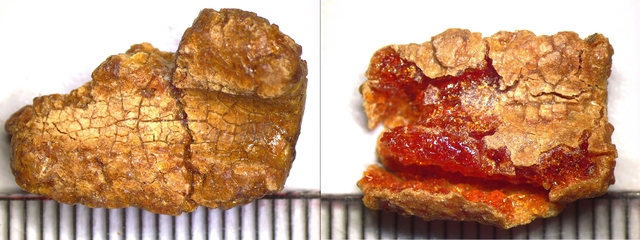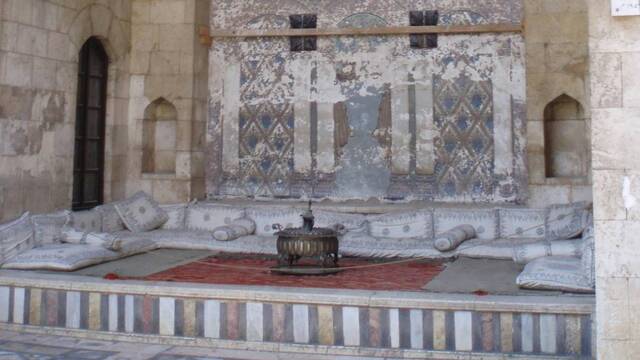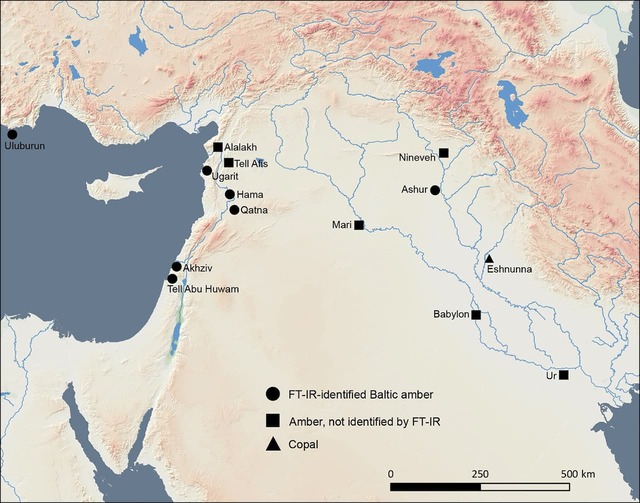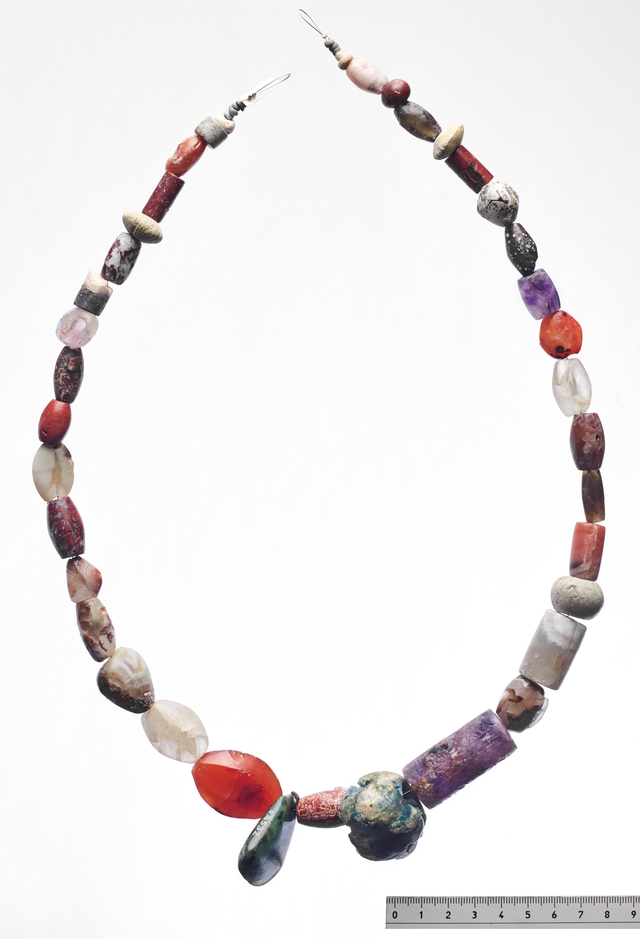In the ancient city of Hama, Syria, a remarkable discovery has shed light on the extensive trade networks of the Iron Age. Researchers recently identified Baltic amber beads in burial sites, revealing the far-reaching trade routes connecting the Baltic region with the Levant over 3,000 kilometers away. This fascinating find not only highlights the importance of Hama as a trading hub but also deepens our understanding of ancient cultural exchanges. These beads are a tangible link to a time when goods traveled vast distances, showcasing the sophistication of ancient commerce.
The Discovery of Baltic Amber Beads in Hama
The ancient city of Hama has long been a focal point for archaeological research due to its long history of continuous occupation. Excavations dating back to the early 20th century revealed that the city had been a vibrant hub for trade and culture, with evidence of human habitation stretching from the Late Neolithic period to the Ottoman era.
During excavations conducted between 1931 and 1938, archaeologists discovered Iron Age cremation tombs, which were filled with burial goods, including 51 beads—17 of which resembled amber. However, it wasn’t until recently that these beads were subjected to more advanced scientific analysis, confirming that they were indeed made from Baltic amber.


The beads, which had been stored for decades in the National Museum of Denmark, were analyzed using cutting-edge techniques such as Fourier-transform infrared spectroscopy (FT-IR) and gas chromatography-mass spectrometry (GC-MS). These methods allowed researchers to pinpoint the exact chemical composition of the amber, and the results were nothing short of extraordinary. The molecular signature of the amber beads matched nearly perfectly with samples from the Baltic region, confirming that these beads had traveled a long distance to reach Hama.
Video
Tune into this video to uncover the secret history behind the construction of the gigantic stone blocks in Baalbek and discover who really built them.
The Amber Road: A Vital Trade Network

The discovery of Baltic amber in Syria is not only significant for its historical context but also for its implications on understanding the ancient trade routes that connected distant regions. Baltic amber, a fossilized tree resin, was highly prized in the ancient world, and its trade network—often referred to as the Amber Road—played a crucial role in connecting Northern Europe to the Mediterranean and the Near East. This route facilitated the exchange of amber, which was valued for its beauty, perceived therapeutic properties, and religious significance.
While the Amber Road is already well-documented for its reach throughout Europe, this discovery in Syria provides evidence that the trade network extended far beyond the Mediterranean, reaching the Middle East and even parts of Mesopotamia. The Hama beads offer a direct link between the Baltic Sea and the ancient Levant, emphasizing the complexity and breadth of ancient trade systems. This trade route would have involved the movement of goods through various intermediaries, with merchants traveling through regions such as the Black Sea and Anatolia, before eventually reaching the bustling trade centers of the Near East.
Analysis of the Amber Beads

The identification of the amber beads as Baltic in origin is a groundbreaking achievement, thanks to modern scientific techniques that were unavailable to archaeologists in the 1930s. By employing FT-IR and GC-MS, researchers were able to measure the infrared absorption and molecular makeup of the beads, revealing their exact chemical composition. This detailed analysis confirmed that the beads were made from the same amber that had been found along the shores of the Baltic Sea, marking the first direct evidence of Baltic amber in Hama.
This scientific breakthrough not only provides new insight into the trade networks of the Iron Age but also highlights the growing importance of advanced techniques in archaeological research. In the past, the identification of materials like amber would have been based on visual observation and limited chemical analysis. Today, the use of cutting-edge technology allows researchers to make more accurate and precise identifications, furthering our understanding of the global connections that existed in the ancient world.
The Role of Amber in Ancient Societies
Amber was not only valued for its beauty but also for its symbolic and ritual significance in many ancient cultures. In Mesopotamia, for example, amber was believed to have therapeutic properties and was used in various religious ceremonies. Cuneiform texts from the period describe amber as a sacred material associated with deities, rituals, and the afterlife. It was highly prized among the elites, who used it in jewelry, amulets, and decorative items.
The social and economic value of amber made it an essential component of ancient trade networks. As an exotic and rare material, it was sought after by rulers and high-ranking individuals across the ancient world. The Baltic amber found in Hama would have been seen as a luxury good, and its presence in the city further emphasizes Hama’s role as an important center for regional and interregional trade.
Hama’s Role in Iron Age Trade
Hama’s strategic location played a significant role in its development as a trade hub. Situated on the banks of the Orontes River, Hama was a key point in the trade routes that connected the Mediterranean to the interior of the Levant and beyond. The city’s proximity to other major centers of trade, such as Phoenicia and Mesopotamia, allowed it to act as a conduit for goods, ideas, and cultural exchange.
The presence of Baltic amber in Hama is a testament to the city’s extensive trade networks, which spanned vast distances and connected it to some of the most important regions of the ancient world. Amber, as one of the most distant materials to reach the city, would have been highly valued and would have contributed to Hama’s reputation as a thriving center of commerce. The city’s ability to facilitate the movement of goods from distant lands underscores its importance in the broader economic landscape of the Iron Age.
Re-examining Museum Collections

One of the key takeaways from the discovery of the Baltic amber beads is the importance of revisiting museum collections for continued research. Many artifacts, like the beads from Hama, were stored and forgotten for decades, only to be rediscovered in the face of new technological advancements. In regions like Syria, where archaeological fieldwork is difficult due to ongoing conflicts, museum collections represent a valuable resource for expanding our understanding of the past.
The study of artifacts that have long been in storage can reveal new insights into ancient societies and trade networks. The Hama beads, long overlooked, are now helping to reshape our understanding of ancient trade routes and the role of cities like Hama in the Iron Age economy.
Implications of the Findings
The discovery of Baltic amber beads in Hama carries significant implications for our understanding of ancient trade and commerce. It not only confirms the existence of the Amber Road but also highlights the role of cities like Hama in facilitating long-distance trade. This finding expands our knowledge of the complexity of ancient trade networks, which connected distant regions and allowed for the exchange of goods, ideas, and cultural practices.
The presence of amber in Hama also underscores the social and economic value of exotic materials in ancient societies. The beads, likely crafted by skilled artisans, were not just decorative items—they were symbols of wealth and prestige. The study of these artifacts provides valuable insights into the cultural and economic practices of the Iron Age, revealing how societies interacted and traded across vast distances.
Video
Watch this video to learn about the fascinating 3,000-year-old glass beads discovered at “Britain’s Pompeii,” with origins traced back to Iran.
Conclusion
The discovery of Baltic amber beads in the ancient city of Hama is a remarkable find that sheds new light on the long-distance trade networks of the Iron Age. By using advanced scientific techniques, researchers have been able to trace the beads’ origins to the Baltic Sea, confirming the existence of the Amber Road and highlighting Hama’s role as an important trade hub.
This discovery not only expands our understanding of ancient trade routes but also emphasizes the significance of revisiting museum collections to uncover new insights into the past. The Hama beads are a testament to the global connections that existed in the ancient world and provide a glimpse into the complex economic and cultural systems that shaped the Iron Age.



